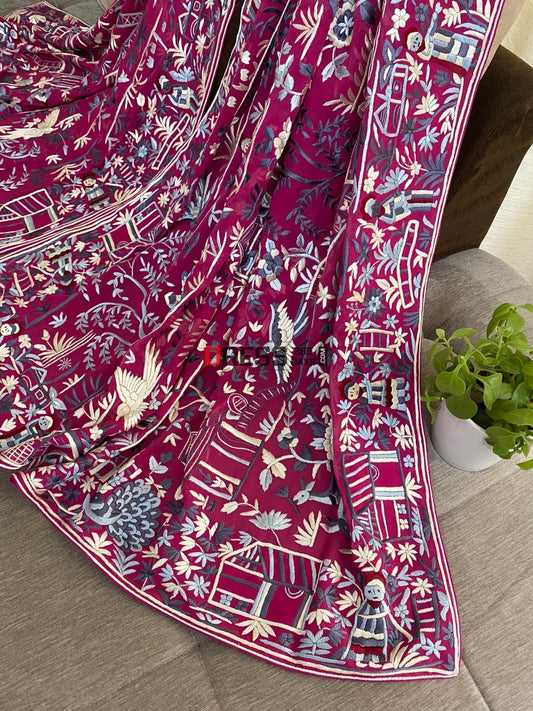Wearing a Parsi Gara isn't just about fashion; it's about embracing a rich tapestry of history, culture, and artistry.
A Journey Through Time
In the 19th century, Parsi traders voyaged to China, bringing back exquisite silk fabrics known as 'gaaj' or 'paaj'. These silks became the canvas for intricate embroidery, blending Persian, Chinese, Indian, and European influences into what we now cherish as the Parsi Gara saree.

Motifs That Tell Stories
Every Parsi Gara saree is adorned with motifs that narrate tales of nature, mythology, and daily life. From delicate flowers symbolizing beauty to birds representing freedom, each design is a testament to the artisan's storytelling prowess. Notably, motifs like 'Chakla Chakli' (sparrow pairs) and 'Kaanda Papeta' (onion and potato) showcase the unique blend of humor and tradition in Parsi embroidery.

The Artisans Behind the Craft
Creating a Parsi Gara saree is a labor of love. Skilled artisans employ techniques like satin stitch, French knots, and stem stitch to bring designs to life. Each saree can take several months to complete, reflecting the dedication and artistry involved.
Preserving a Cultural Treasure
Despite its rich heritage, Parsi Gara embroidery faces the threat of fading into obscurity. The number of skilled artisans is dwindling, and the intricate nature of the work deters many from taking up the craft. Efforts are underway to preserve this art form, including training programs and initiatives to promote its appreciation among newer generations.
Dress365days: Continuing the Legacy
At Dress365days, we are committed to honoring and perpetuating the legacy of Parsi Gara embroidery. Our collection features authentic, handcrafted Parsi Gara sarees that embody the elegance and cultural richness of this art form. By choosing our creations, you not only adorn yourself in timeless beauty but also contribute to the preservation of a treasured heritage.

Embrace the elegance. Celebrate the heritage. Wear a Parsi Gara.

